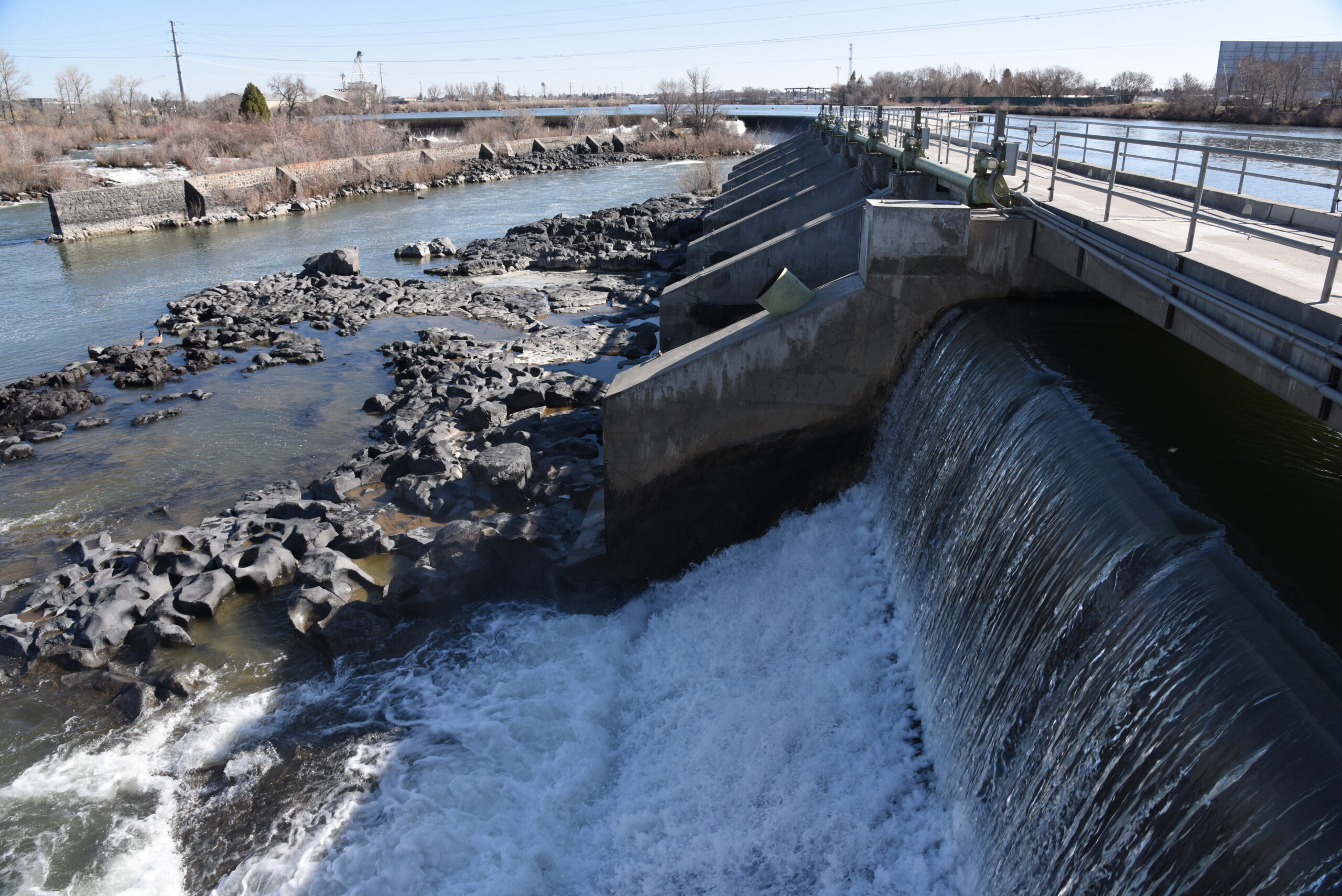Utilities with hydroelectric power generation need solid data for day-to-day operations and long-term planning.
So, when managers at Idaho Falls Power wanted to explore the potential of their power generation assets, they turned to Idaho National Laboratory for help. Because of location, the pairing is a natural one. Idaho Falls Power, an electrical utility owned by the city of Idaho Falls, operates five run-of-river hydropower dams and turbines that date back to the early 20th century. The dams supply roughly 28.5% of the city’s annual energy demand. INL is headquartered in Idaho Falls, and the city’s electrical infrastructure provides a backyard test bed for the grid resilience research it does for the U.S. Department of Energy.
The lab’s Technical Assistance Program (TAP) provides 40 hours of INL expertise free to qualifying businesses and organizations. Through TAP, INL researchers prepared two reports that quantify the dams’ seasonal capacities for islanding and black starting, providing details on critical loads that can be supported in emergencies at different times of the year. Black starting involves jump-starting a local grid with equipment and electricity that’s immediately available, while islanding involves powering the local grid independent of the larger regional grid. The reports could help Idaho Falls Power as it applies for grid resilience grants available from DOE’s Grid Resilience and Innovation Partnerships (GRIP) program, which is administering $10.5 billion to improve the electric grid’s ability to withstand extreme weather.

“To have that outside perspective is very helpful,” said Stephen Boorman, Idaho Falls Power’s assistant general manager. The utility’s latest GRIP grant application seeks funds to automate power distribution and equipment needed to sectionalize its system. That equipment could include batteries, new transmission lines and a substation on Idaho Falls’ north side, near INL’s Research and Education campus.
INL and I.F. Power have worked together since an outage in early December 2013 left city residents without electricity for roughly three hours in subzero cold. The outage occurred after the balancing authority that manages eastern Idaho’s electrical grid ordered the city to shed 35 megawatts of load in 30 minutes. This was to avoid an even more widespread outage, as Rocky Mountain Power worked to restore its Goshen substation, which had gone dark earlier in the day. The incident drove home the interconnectedness of grid providers.

In the wake of the outage, I.F. Power’s directors asked INL to help them determine how to adapt the city’s hydro dams so they could quickly use islanding and black starting to bring electricity back to the grid for hospitals and emergency service providers without disrupting the surrounding area.
Because they take time to ramp up, dams and turbines need an external boost to quickly dispatch electricity to the grid. Typically, that boost comes from batteries, supercapacitors or flywheels. A series of tests conducted by INL and Idaho Falls Power in April 2021 showed that innovative controls, configuring load from different facilities and integrated energy storage technologies can keep the lights on locally regardless of what’s happening to the regional grid.
Idaho Falls’ appetite for electricity has been growing, especially in the winter months, said Shafiul Alam, an INL power and energy systems researcher who prepared one of the TAP reports. But run-of-river power facilities depend on how much water is flowing in the river and, in eastern Idaho, there is typically more water in the river during the spring and summer. Solar and wind power contribute, but also tend to tail off in the winter.

Alam’s report on the hydropower portfolio indicates that with a successful black start of its entire hydro fleet, Idaho Falls Power can support up to 8.5 megawatts between November and February, 20 megawatts in June and July, and 16 megawatts in August and early September. These are peak months, when demand is highest — from irrigation and air conditioning in the summer and heating in the winter — and generation is lowest. March, April, May, late September and October are times when hydropower generation is moderate to abundant and loads are milder.
“With energy storage support to the islanded hydro fleet, I.F. Power can currently form a microgrid at the expense of a significant amount of manual switching,” Alam said.
The other document, a resilience assessment completed by INL researcher Ryan Hruska, focused on characterizing the system’s exposure to wider hazards, including interdependencies. With its run-of-river facilities, which are incapable of storing much water, Idaho Falls Power is vulnerable.
“Power production is entirely dependent on the existing flow volumes and makes generation vulnerable to drought and upstream water diversions,” the report said. “Long-term drought conditions, compounded by effects of climate change, have the potential to significantly reduce and alter timing of flows. Recent droughts have depleted storage reservoirs across the West, and higher temperatures have altered both the amount and timing of inflows. The primary reservoirs above Idaho Falls are Jackson Lake and Palisades reservoirs. Both reached historic lows in 2022.”

Idaho Falls Power and its customers, who have traditionally enjoyed some of the lowest power rates in the United States, also face some uncertainty from the Bonneville Power Administration. In 2022, the administration proposed changes to their long-term hydro generation forecast due to observed changes in streamflow timing and volume. Likewise, the Western Area Power Administration significantly increased rates in 2022 due to the reduction in generation at their hydropower facilities. “These changes have the potential to impact the availability and cost of power for Idaho Falls Power,” the report said.
Because winter load is growing and Idaho Falls Power’s dependence on imported power is most acute at the same time, INL’s resilience assessment outlined the following options:
- Consider working with external transmission partners (like Rocky Mountain Power) to build redundancy into their high voltage delivery locations.
- Consider developing microgrids to support critical loads in case of a long-term power disruption impacting the region.
- Evaluate increased integration of distributed energy resources (smaller generation units located on the consumer’s side of the meter, e.g. solar panels) and evaluate circuit adequacy for deployments.
- Evaluate the potential to diversify their generation portfolio.
- Evaluate substation protection measures.





